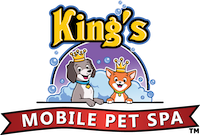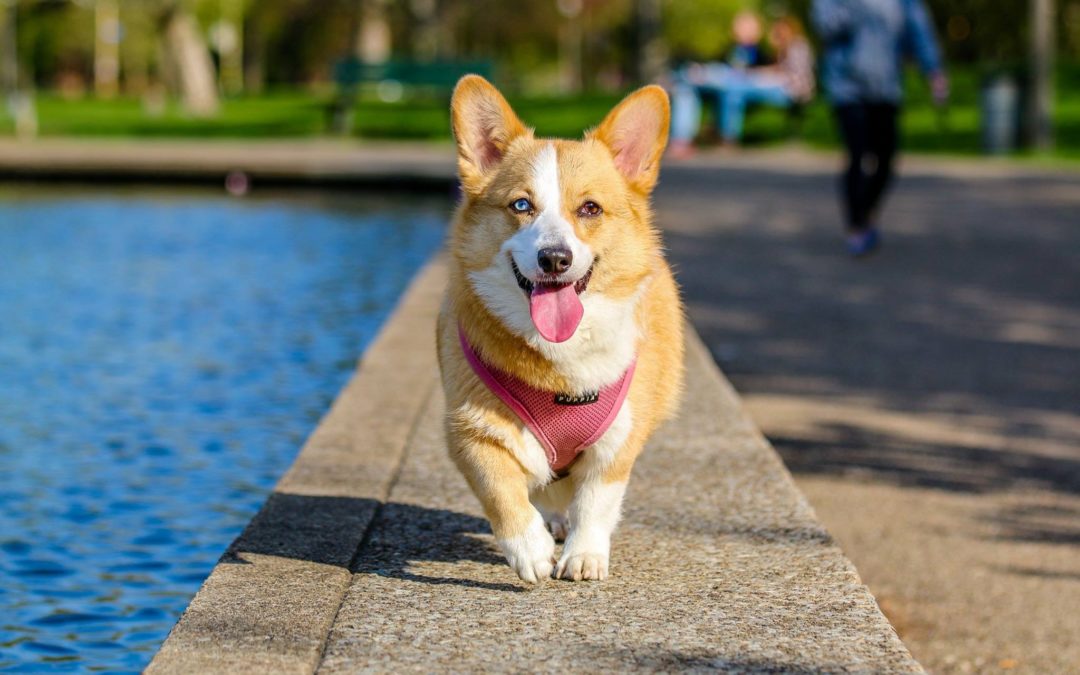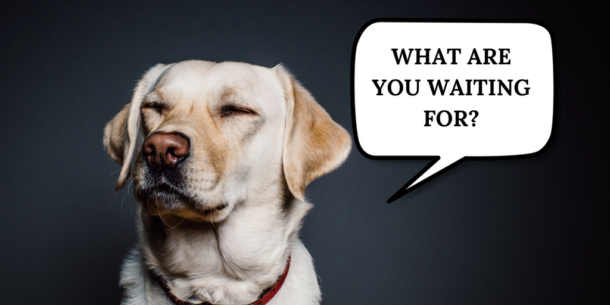As important as it is to routinely groom your dog, it can be a pricey endeavor. Buying a DIY for grooming at home is a viable option. To help you feel a little more comfortable with this idea, we’ve put together a small list of tools and safety precautions for DIY dog grooming.
Before you shop
Almost all dogs benefit from regular baths and brushing. But long-haired breeds and dogs with curly or unusual coats have more particular needs. Before you start collecting grooming supplies, research the grooming requirements of your dog’s breed.
Professional groomers recommend these essentials for most dogs (and their people):
- Shampoo and bathing tools to clean your dog’s coat
- Combs to detangle fur, remove mats, and promote shiny coats
- Bristled or rubber brush for removing undercoat and smoothing fur on shorthaired dogs
- Clipper and/or shears to trim long hair
- Nail grinder to safely file nails
Thing You Shouldn’t Do At Home While Giving You Pet a Groom
It is an absolute necessity to have the proper tools with you if you are going to attempt DIY dog grooming. Human clippers are a no-no when it comes to dog grooming because of the speed of the clippers and the fact that the blades are often too short for pets and can result in pain or razor burn for the animal. Some human clippers do not even run at a speed fast enough to cut the hair of breeds that typically have thicker hairs.
Speaking of breeds… this is something you need to be acutely aware of when grooming your dog. Different breeds can often come with different grooming concerns whether it be a thick undercoat that mats easily or nails that rip easily. Make sure you do the proper research on your dog’s breed before you get into the grooming game- here’s a site that can help you get started.
DOG GROOMING BY THE BREED
Certain dog breeds have specific grooming concerns. Take a look at what a Greyhound will need, compared to a Border Collie, or a Westie.
Australian Shepherd
- Australian Shepherds are hardy working dogs with thick double coats that keep them warm and protect them from sticks, burrs and the other hazards of corralling livestock. With proper care these dogs need very little trimming, but sometimes it is necessary to remove mats to resolve coat problems, for the dog’s comfort or for the owner’s convenience. Whether you choose to do a lot or a little depends on the reason behind the trimming.
Beagle
- Beagles have medium-length, dense, waterproof coats that are easy to care for and don’t require the complicated grooming of some longer-haired breeds. Little scent hounds originally bred to hunt rabbits and other small game, beagles not only enjoy following interesting scents but sometimes roll around in something smelly, getting all kinds of outdoor grime on their fur. Regular bathing and brushing is needed to keep your beagle’s coat fresh, shiny and clean.
Border Collie
- Border collies come with a variety of coat lengths, ranging from short to medium-length to very long. However, all border collies have a thick undercoat, and the fur can easily become matted if left ungroomed. Because grooming your dog can be tricky, you should take the dog to a professional groomer for major haircuts, to remove excessive matting, or about once every three months. However, trimming your border collie’s hair can lengthen the time between grooming sessions and prevent matting.
Boxer
- With a short, tight coat that doesn’t mat or tangle, the Boxer dog is practically “wash and wear.” In fact, outside of a hairless breed, a healthy Boxer’s coat is about as low maintenance as it gets. But it’s not necessarily this way for all Boxers. There may be skin-related issues that require you to bathe your Boxer more frequently; for example, if the dog suffers from food or flea allergies, or if your dog likes to roll around in dirt. If your dog is an indoor dog or couch potato, however, the grooming procedures are quite minimal. Boxers are naturally clean animals who groom themselves with their cat-like licking skills.
Cavalier King Charles Spaniel
The Cavalier King Charles Spaniel has a high maintenance coat that requires regular bathing and grooming in order to stay looking sharp. Learn how to groom your Spaniel here.The Cavalier King Charles Spaniel is a toy breed with a medium-length, wavy coat. For show purposes, no clipping of the coat, except on the feet, is allowed, so daily brushing helps keep the soft, silky fur from becoming a tangled mess. The breed has trademark feathering of the fur on the chest, ears, legs, feet, and tail that needs regular bathing to keep it and the rest of the dense coat looking its best.
Chow Chow
- With origins traceable to northern China thousands of years ago, the Chow Chow seems to have an ancestry going back to ancient general-purpose arctic working dogs. Depictions of chow-like dogs are found on pottery of the region 2,000 years ago, and old writings indicate similar dogs were used as sporting dogs by Chinese emperors 1,300 years ago. Primarily a companion dog today, the Chow Chow carries as a marker of its long history an extremely dense and heavy double coat that needs extensive grooming. With a ruff that bestows a lion-like appearance, Chow Chows can be clipped to exaggerate the look, while reducing the grooming they need.
Cockapoo
- Since the Cockapoo is a mixed-breed dog, a cross between a cocker spaniel and a poodle or the result of two cockapoos breeding, it is not recognized by the American Kennel Club. This lack of conformation requirements makes it hard to tell what these dogs will look like, especially if both parents are cockapoos, so there is no single right way to groom these dogs. The grooming style you choose for your cockapoo depends on your personal preferences and the type of hair your dog has.
French Bulldog
- French Bulldogs are a type of relatively small companion dogs, bred down in size from full-sized English bulldogs as far back as the 19th century. These dogs have a smooth coat that requires minimal grooming for the show ring. Still, if you don’t pay attention to detail, the judge is sure to notice. If you plan on showing your Frenchie, make regular grooming a part of your routine. Some aspects of grooming, particularly the face folds, toenails and eye area, need ongoing care if your dog is to be ready to go when show day rolls around.
German Shepherd
- German Shepherds are not high-maintenance dogs, but they definitely benefit from regular care and grooming. While their double coats don’t need clipping or trimming, they can develop mats and skin problems if you don’t brush them regularly to remove dead hair and debris. Always make grooming a pleasant experience for your dog by giving plenty of petting and praise. Dogs who look forward to grooming are much easier to manage than those who hate or fear it. The best time to start grooming your pet is when they are puppies. You can also teach older dogs to enjoy grooming time, but it may take a bit of patience on your part if they are resistant.
Golden Retriever
- Bred in the 19th century to be both hunting and companion dogs, golden retrievers continue to fulfill those roles today, and are among the most popular family pets in the United States. Easily recognized by their dense golden coats made up of a soft, thick undercoat and a heavy outer coat, golden retrievers have a tendency to shed quite a bit of hair. They must be groomed frequently to remove excess undercoat and reduce shedding. This process will make your pet more comfortable and will make your home more fur-free as well. Grooming may include trimming for tidiness, but the protective golden retriever coat should never be shaved.
Greyhounds
- Regular nail grooming is an important part of care for your greyhound. Because greyhounds are active dogs, they can easily rip a nail that has grown too long, resulting in extreme pain and potentially causing an infection. If you have never trimmed your dog’s nails before, have your veterinarian or a groomer do it or teach you how to do it. Improper trimming can result in nail injuries that are very painful and will make the dog want to avoid future trimming.
Lhasa Apso
- The Lhasa Apso’s long, lush, double coat of hair presents a regal appearance that recalls the breed’s sentry dog ancestors in Tibet. The hair, an identifying characteristic of the breed, requires daily brushing and monthly bathing to keep it in good condition. If you have no plans to show your dog, you can have the hair clipped for easier care, but show dogs require special care to maintain their gorgeous locks.
Long Haired Chihuahua
- Long-haired Chihuahuas are simple dogs to groom and keep clean. Start grooming Chihuahuas when they are young, so they become accustomed to the handling and the activity. The most important aspect of grooming for a long haired Chihuahua is cleanliness, and the ASPCA recommends bathing your pet at least every three months. Chihuahuas are often indoor dogs, but if they sleep in your bed or travel in cars regularly, you may want to wash them more frequently.
Miniature Schnauzer
- Miniature schnauzers require regular grooming to keep them looking and feeling their best. Part of this grooming includes weekly nail clippings to prevent the nails from touching the floor when they walk, potentially causing the dogs to slip or lose their balance. Overgrown nails can also cause health issues and painful infections when they grow into your dog’s paw pads. Start grooming sessions at a young age to get your dog used to them, and use a pet nail clipper or sanding device to give your miniature schnauzer regular trims in order to keep feet healthy.
Pekingese
- The Pekingese dog breed originated in China during the eighth century. The breed has a small, compact body with naturally long, flowing fur that gives Pekingese a regal appearance but also requires weekly brushing. The outer coat is coarse with a softer undercoat. The natural fur direction forms a lion-like mane around the neck and shoulders. The fur along the top of the back is shorter than the mane, with longer side fur falling naturally to the floor. The legs, thighs, ears and tail have long, feathered fur.
Pomeranians
- Pomeranians have thick double coats that give these dogs an appearance that’s between a tiny lion and a teddy bear. The long, fluffy coat needs frequent grooming to keep it clean and free of mats. If you don’t have time to brush your pet several times per week, one answer can be a professional grooming and a stylish new look. If the new style includes a shorter coat, it will decrease the time you have to spend grooming your pet at home. Beware, however, if you think you may want the full coat back someday. It may never be quite the same.
Rough Coated Jack Russell Terrier
- The Jack Russell Terrier has a double coat of harsh, thick hair. Called the Parson Russell Terrier by the American Kennel Club, the dogs can have smooth, rough, or broken coats. Rough-coated dogs have longer hair than the smooth-coated, and have excess trace hair on the dog’s head, face, legs and body. The hair is coarse to protect the dog from the elements, and soft, silky or curly hair is considered a fault. Rough-coated Jack Russell terriers need little grooming to look their best at all times.
Shetland Sheepdog
- Shetland Sheepdogs are sturdy herding dogs that resemble miniature Collies but are actually a separate breed. They have a thick double coat consisting of a soft, fluffy undercoat and a longer, harsh topcoat. These dogs need very little trimming, even for shows, but there are some things you can do to both make them look neater and to help them to be more comfortable. You may want to bathe your Shetland Sheepdog prior to trimming, but you can get excellent results without a bath, as long as your dog isn’t very dirty.
Shih Tzu
- If you’re lucky enough to have a Shih Tzu dog or puppy, you know the breed is known for their playful and affectionate personality. You also know that their coat–which naturally hangs straight down like a big mop–can shed heavily, tangle easily, and be uncomfortable for your pet. It can even cause overheating in warmer temperatures, which is dangerous to your pet’s health. This is because Shih Tzus have a long, double coat that can trap heat and requires diligent grooming. The answer? These Shih Tzu haircuts.
Siberian Husky
- Siberian Huskies shed their undercoats twice a year. This is called “blowing the coat,” and it usually occurs in spring as the weather warms, and again in fall to make way for growth of a new undercoat for the cold weather ahead. You should never have the undercoat of your Siberian Husky manually removed. In very warm climates such as Florida and Texas, the dogs may shed year-round. Regular grooming, not undercoat removal, is the secret to keeping your Siberian Husky clean and comfortable. In addition, it is important to never shave a Siberian Husky, as the coat provides natural insulation both against summer heat and winter cold, and it protects the Husky’s skin from sunburn.
West Highland Terrier
- Originally from the Highlands of Scotland, the West Highland White Terrier usually referred to as a “Westie,” has a wiry, highly insulated coat to protect them from the elements. These all-white little dogs have a rough outer coat and thick, soft inner coat. Westies need regular brushing and stripping unless the fur is cut short.
Wirehaired Dachshund
- Regular grooming of wirehaired Dachshunds is vital to keep this dog’s streamlined, dapper appearance. This breed possesses a short, coarse outer coat with a thick undercoat, and the outer hairs exhibit a strong degree of independence. As with most wirehaired breeds, the Dachshund’s coat responds well to brushing, stripping, and occasional plucking out of dry, dead hairs. The coat of a well-groomed wirehaired Dachshund should resemble a close-fitting jacket, lying snugly against the dog’s body with long hairs evident only on certain parts of the face.
Yorkshire Terrier
- Known for their long, flowing hair, Yorkshire Terriers have a versatile coat that can be cut and styled in a variety of different ways. These tiny dogs can wind up with a tangled mess of a coat if they are not properly groomed. The type of clip or hairstyle that is appropriate for your dog may be dictated by your lifestyle and that of the dog. While show dogs must have a full coat, pet Yorkies can have cuts that require less maintenance.
DON’T SEE YOUR DOG ABOVE?
If your dog’s breed isn’t listed above, fear not! We have tons of information on grooming to make sure you experience nothing but smooth sailing.
- Basic Grooming Tips: This article covers grooming 101. From brushing to bathing, this article will help you clean up your pup without dirtying your house.
- Puppy Grooming: Puppies need grooming too, and since they are still babies, there are some extra considerations to be made. Here are some puppy grooming ideas you may have otherwise overlooked.
- Large Dog Grooming: With a Great Dane comes great responsibility. Having a big dog means you are going to encounter some obstacles during grooming that people with a tinier dog would not. This article will show you the road bumps you might encounter, and how to persevere.
- Small Dog Grooming: Small dogs also come with their own set of grooming-related complications. Learn how to get between their tiny toes and make sure they’re sage in the bathtub.
Another thing to be wary of is the thin skin areas on dogs.
Areas such as the underside of the neck, armpits, and belly can all be bruised or cut quite easily if you don’t pay attention. If you don’t feel comfortable with grooming these more risky areas you can leave them be until you take your dog into a grooming professional.
Two simple tips for those looking to get into DIY grooming are to take it slow and to establish a routine. Grooming is often a stressful process for pets and if you don’t have the proper experience, you at least want to make your dog as comfortable as possible. A routine will reduce the stress and anxiety your pet is experiencing while taking it slow will help the both of you feel better about this new adventure.
If you still don’t feel comfortable with DIY grooming after all of this, feel free to give us a call at 818-796-2000 and we’ll come to you!


